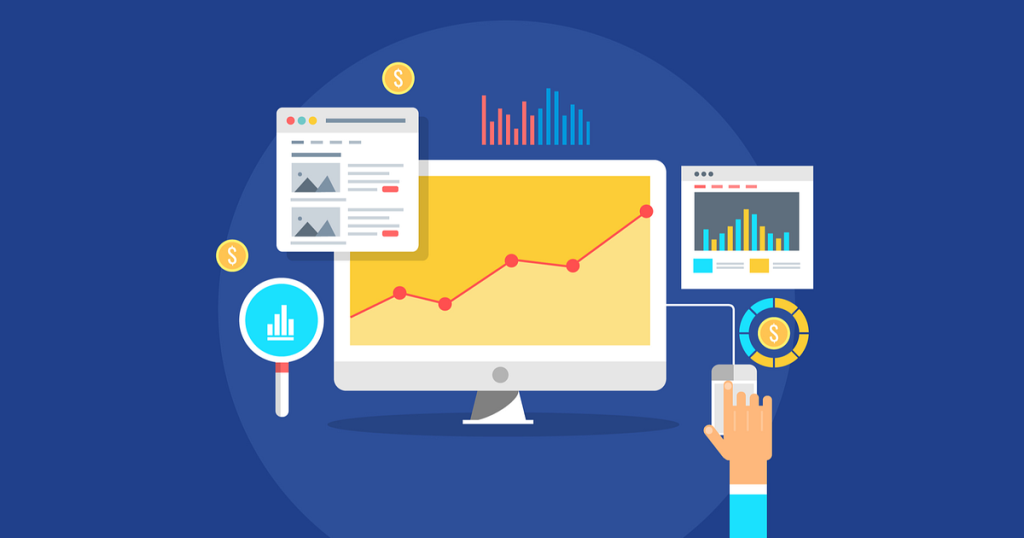Turning your blog into a full-time business is no longer a far-fetched dream. Many people around the world are making a living — and even thriving — by blogging. However, making this transition takes time, strategy, and consistency. Whether you blog about travel, food, parenting, tech, finance, or personal development, you can build it into a sustainable business if you follow the right steps.
Let’s explore in detail how you can turn your blog into a full-time income source and live life on your own terms.
1. Start with a Clear Niche and Purpose
The foundation of any successful blog is a focused niche. Instead of writing about everything, choose one topic you’re passionate about and that has a clear audience. Whether it’s wellness, DIY crafts, or digital marketing, a niche gives your blog direction and helps you attract loyal readers.
When your blog has a purpose — like helping moms manage stress, guiding freelancers on managing finances, or reviewing tech products — readers know what to expect. A clear purpose builds trust and makes it easier to create monetization strategies.
2. Create Valuable and Consistent Content
Consistency is key in blogging. Readers expect regular posts, and search engines reward fresh content. Try to post at least once a week when starting. More importantly, focus on quality over quantity. Every post should solve a problem, answer a question, or entertain your audience.
Valuable content keeps readers coming back and encourages them to share your posts. This builds traffic organically. Use tools like Google Trends or AnswerThePublic to find out what your audience is searching for, then create blog posts to match.
3. Grow Your Audience Through Multiple Channels
Don’t rely on Google traffic alone. Promote your blog through social media platforms like Instagram, Twitter, Facebook, LinkedIn, or Pinterest, depending on where your target audience spends time. You can also build an email list — which is one of the most powerful tools to turn readers into loyal followers and customers.
Use lead magnets such as free eBooks, checklists, or email courses to attract subscribers. Once they’re on your list, send regular newsletters with your latest posts, product offers, or personal updates to build a relationship.
4. Optimize Your Blog for SEO
Search Engine Optimization (SEO) helps your blog appear in search results when people search for topics you write about. Learn basic SEO strategies such as keyword research, using proper meta tags, writing engaging titles, and internal linking.
Install SEO plugins like Yoast SEO or Rank Math if you’re using WordPress. Make your content easy to read, add relevant keywords naturally, and focus on user intent. SEO is a long-term investment but can drive consistent traffic to your blog.
5. Monetize Your Blog Strategically
There are several ways to make money from your blog:
- Affiliate marketing: Recommend products and earn a commission on sales.
- Sponsored posts: Brands pay you to write about their products.
- Digital products: Sell eBooks, printables, or online courses.
- Services: Offer coaching, writing, or consulting services.
- Ads: Use ad networks like Google AdSense or Mediavine to earn from traffic.
Choose a monetization model that fits your niche and audience. For instance, a food blogger might create recipe eBooks, while a tech blogger might offer affiliate reviews.
6. Track Your Progress with Analytics
Data helps you understand what’s working and what needs improvement. Use Google Analytics to track your blog traffic, popular posts, time on site, and where your visitors are coming from.
Knowing your numbers helps you refine your content strategy, focus on top-performing posts, and improve user experience. You can also identify which traffic sources bring the most engaged users — whether it’s social media, search engines, or email.
7. Invest in Your Skills and Tools
To grow a blog into a business, treat it like a business. Invest in tools like premium themes, email marketing services, or graphic design software. Also, improve your skills by learning about SEO, content marketing, email campaigns, and digital product creation.
Consider taking online courses or joining blogger communities where you can network and learn from others. A small investment in learning can lead to bigger returns later.
8. Build Relationships and Collaborate
Blogging doesn’t have to be a lonely journey. Connect with other bloggers in your niche by leaving thoughtful comments, sharing their content, or inviting them for guest posts. Collaboration opens new opportunities and exposes your blog to a wider audience.
You can also appear on podcasts, participate in online summits, or write guest articles on popular platforms. These activities boost your authority and bring new traffic to your site.
9. Develop a Long-Term Business Plan
If you truly want to turn blogging into your full-time income, treat it like a real business. Set income goals, plan your content calendar, track your expenses and revenue, and consider building a brand around your blog.
You can eventually scale by hiring virtual assistants, outsourcing graphic design or editing, and building a team. With a clear vision and strategy, your blog can evolve into a thriving digital business.
10. Stay Patient and Persistent
Most successful bloggers didn’t make money overnight. It takes months — sometimes years — of consistent effort. There will be setbacks, slow traffic days, and even doubts. But if you stay committed, focus on serving your audience, and continue learning, success will follow.
Remember, you’re not just building a blog — you’re building a brand, a community, and a business.
FAQs About Turning a Blog Into a Full-Time Business
1. How long does it take to turn a blog into a full-time income?
It depends on your niche, consistency, strategy, and effort. Some bloggers earn a full-time income in 1–2 years, while others take longer. Focus on creating great content and promoting it wisely.
2. Do I need a large audience to make money blogging?
Not necessarily. Even with a small but engaged audience, you can earn through affiliate marketing, digital products, or offering services. The quality of your audience matters more than the size.
3. What are the best ways to monetize a blog?
Popular monetization methods include affiliate marketing, sponsored posts, selling products or services, and ad networks. Choose a method that aligns with your content and audience needs.
4. Should I quit my job to become a full-time blogger?
It’s better to build your blog alongside your job until it generates stable income. Once your blog consistently covers your expenses, you can consider going full-time.
5. Do I need technical skills to run a blog?
Basic technical skills help, but blogging platforms like WordPress make it easy to manage a blog without coding knowledge. You can also use tutorials or hire freelancers for technical support.
Final Words
Turning your blog into a full-time business is entirely possible — but it’s not instant. With passion, persistence, and a strong strategy, you can grow your blog into a rewarding and profitable career. Keep learning, keep creating, and most importantly, keep connecting with your readers. Your blogging journey can lead to freedom, flexibility, and fulfillment.

